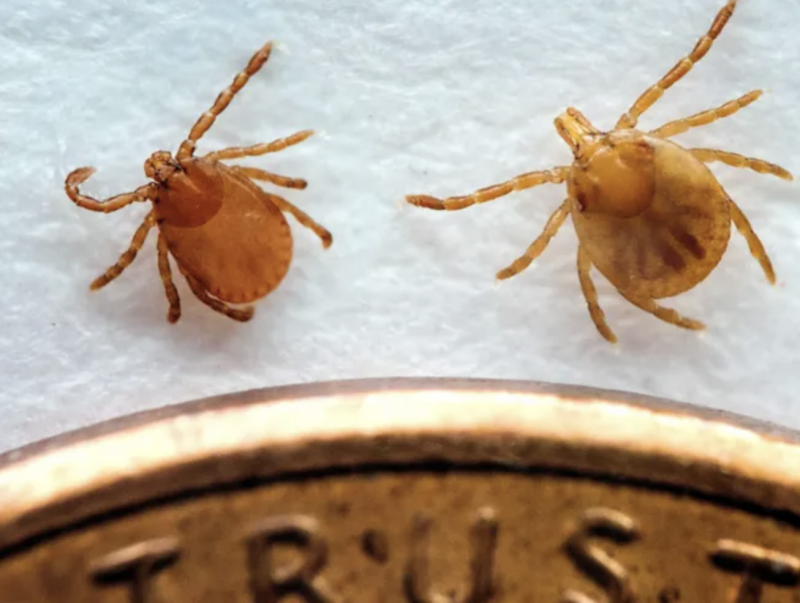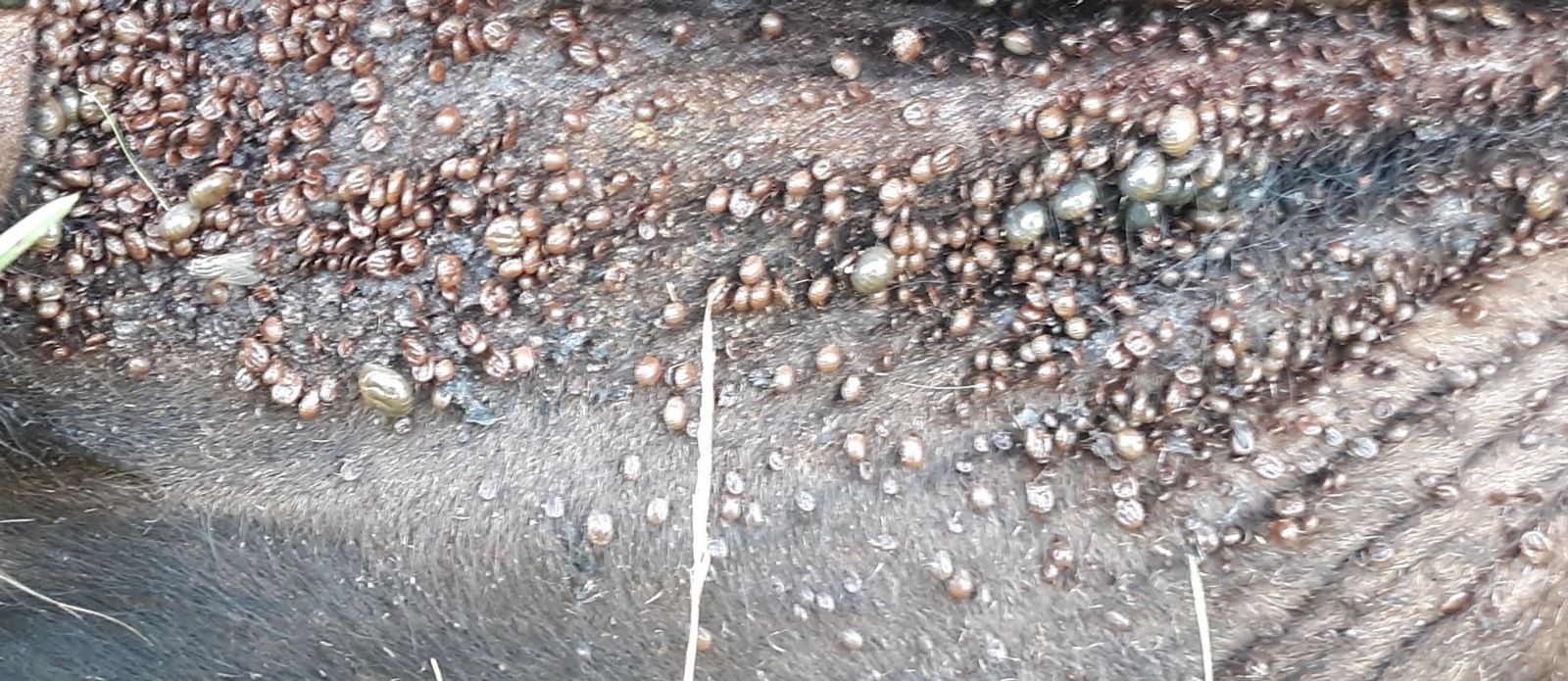Jennifer Whitaker, Georgia Farm Bureau
The Asian Longhorned Tick – an invasive species with the potential to cause severe anemia and tick fever in livestock – has been positively identified on a cow in Pickens County (North Central GA), the Georgia Department of Agriculture (GDA) announced Sept. 21. “The USDA National Veterinary Services Laboratories made the positive identification,” UGA Entomologist Dr. Nancy Hinkle said.
“The Asian Longhorned Tick looks very similar to other ticks in Georgia, so we don’t expect people to be able to distinguish them. One distinctive aspect of Asian Longhorned Ticks is they tend to occur in large numbers. If an animal has one tick it’s probably our common Lone Star Tick,” Hinkle said. “If a cow [or other animal] shows up with hundreds of ticks on it, we’re going to be very suspicious that we’re looking at an Asian Longhorned Tick infestation.”
–
What does it look like?

The Asian Longhorned Tick, left, is similar in size to Georgia’s most common tick, the Lone Star Tick, right. Photo credit: UGA Entomolgy Department
–
Asian Longhorned Ticks (Haemaphysalis longicornis) are light brown and can be smaller than a sesame seed before expanding to the size of a pea when full of blood, according to the USDA Animal and Plant Health Inspection Service (APHIS). Most Asian Longhorned Ticks (ALT) are female and can reproduce without a male. One female ALT can produce 1,000 to 2,000 eggs at one time without mating, APHIS reports. This is how a single animal could find itself hosting hundreds of ticks.
Hinkle’s baseline data shows that prior to the arrival of the ALT in Georgia, there were 22 species of ticks in the state. Some of these species were only found on the gopher tortoise or squirrels. Hinkle says the Lone Star Tick is the most common tick in the Southeast and can be found on a wide range of animals. “If you have a tick on you, your dog, or other animals, the vast majority of times it will be a Lone Star,” Hinkle said.
–
What’s the AL tick’s impact on animals?
APHIS explains that an individual animal with a heavy infestation of ticks will be stressed and experience reduced growth and production. A severe infestation could potentially kill the animal from excessive blood loss. In other countries with established ALT populations, the species can transmit bovine theileriosis (infectious anemia) to cattle and babesiosis (tick fever) to several domestic animal species, according to APHIS.

An infestation of Asian Longhorn Ticks. Photo by Joe Deal, North Carolina State University
—
Where did it come from?
This tick species is native to eastern Asia and had spread to Australia, New Zealand and western Pacific islands (New Caledonia, Fiji) by the early 1900s. In these countries, the species is called bush tick, cattle tick or scrub tick.
According to APHIS, the ALT probably arrived in the U.S. in or before 2010 via domestic pets, horses, livestock or people.
In late 2017, the USDA confirmed the ALT was present in the United States when the species was identified on a sheep in New Jersey, according to the New Jersey Division of Fish and Wildlife. In less than four years, the species has been identified in 17 states, ranging from lower New England to Arkansas. Georgia is the latest state added to the list.
Hinkle says other states where the ALT has been identified are: (listed geographically from north to south to west): Rhode Island, Connecticut, New York, New Jersey, Pennsylvania, Delaware, Maryland, Virginia, West Virginia, Ohio, Kentucky, Tennessee, North Carolina, South Carolina, Missouri and Arkansas, where it has been detected along the state’s border with east Oklahoma.
–
What should producers do if they suspect an ALT infestation?
Livestock producers are encouraged to help determine the extent of the ALT’s presence in the state by monitoring their cattle, goats, horses and sheep for large infestations of ticks.
Since the summer of 2019, Hinkle has been conducting a study to watch for the expected arrival of the ALT in Georgia and collecting baseline information on existing tick populations related to Georgia cattle prior to the ALT’s arrival.
Anyone who finds large infestations of ticks on an individual animal – cattlemen, horse people, backyard poultry producers, pet owners, hunters – should call their veterinarian and report it to their state Department of Agriculture.
–
Can livestock producers control ALT population?
The GDA recommends that livestock producers or backyard poultry growers work with their veterinarian and/or UGA Cooperative Extension agent to develop an appropriate strategy to fight tick infestations of any type. “The good news is that products registered for use on cattle that are recommended for other tick species will be effective against ALT,” Hinkle said.
Visit www.gfb.ag/UGAlivestockpestmanagement and scroll down to the section on ticks for a list of pesticides and instructions the UGA Cooperative Extension recommends for treating cattle and other livestock for ticks. All treatment should be done in consultation with a veterinarian to ensure proper withdrawal times are observed and that a product is not overused to allow resistance to a product to build.
